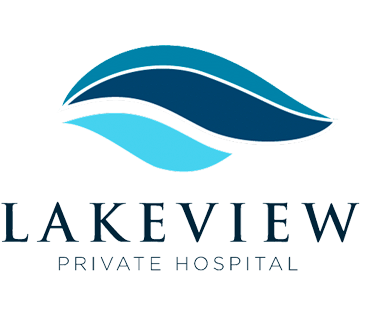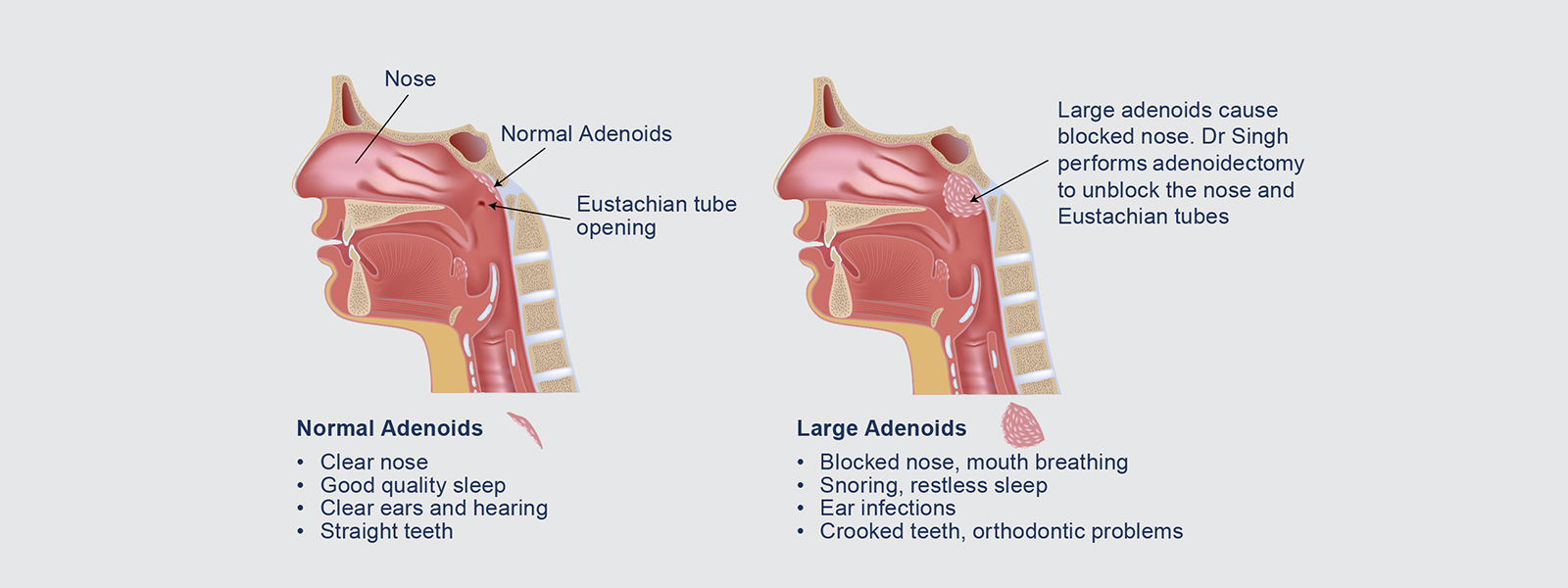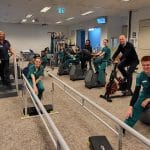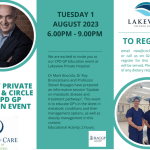Blocked Nose in Children
Dr Narinder Singh
MBBS (Syd) MS (Syd) FRACS (ORL-HNS)
02 9680 8800
Suite G6
Norwest Private Hospital
11 Norbrik Drive, Bella Vista 2153
What problems are caused by a blocked nose in children?
In children, a blocked nose can cause many different problems, including some or all of the following:
- Mouth-breathing
- Noisy breathing
- Poor-quality/ restless sleep
- Snoring
- Behaviour changes
- Sore throats
- Dark circles under the eyes
- White patches on the teeth (from drying out whilst mouth-breathing)
- Crooked teeth
- Teeth grinding and clenching at night
- Nose bleeds (from drying out of the nose lining due to turbulent air flow)
- “Nasal” voice
In severe cases, blocked nose may lead to:
- Obstructive sleep apnoea
- Irritability/ inattention/ hyperactivity/ disruptive behaviour
- Problems with learning/ problem-solving/memory
- Unhealthy gums
- Dry, cracked lips
- Sinus problems
- Bed-wetting
- Night sweats
But most children don’t complain of a blocked nose! Surely, the child’s nose can’t be blocked if he/ she isn’t complaining?
Most children won’t know they have a blocked nose! Usually, the child’s parents don’t realise, because they just assume it is normal for some children to mouth-breathe. However, mouth-breathing in children is NOT normal! If you observe some of the symptoms listed above, there is a good chance the child has significant nasal blockage, without the child or parents realising it.
What does a blocked nose have to do with crooked teeth?
A clear nasal passage is critical to the development of normal teeth in children. Normally, children should breath through their nose, especially at night. If the nose is blocked, children will breathe through their mouth. This is abnormal. When children mouth-breathe, their teeth can grow crooked, and their maxilla (upper jaw) may become too narrow affecting the shape of their face.
How can parents tell if their child’s nose is blocked?
Advise parents to watch their child closely during the night when they are asleep. If their mouth is open when they breathe, their nose is blocked!
Other tell-tale signs include those listed above.
What causes a blocked nose in children?
In the majority (>95%) of children, blockage is caused by:
- Big adenoids
- Big inferior turbinates
- Hayfever (Allergic rhinitis)
Other causes of blockage in children include:
- Deviated septum (much less common)
Much less common causes of a blocked nose in children include:
- Sinusitis
- Objects the child has pushed in to the nose (foreign bodies)
- Other rare causes (birth defects, tumours/cancers (very rare), etc).
How can I find out what is causing a child’s blocked nose?
- History (mouth breathing, snoring, teeth grinding, allergy)
- General examination (facial appearance, mouth breathing, white patches on teeth, dark circles under eyes)
- Nasal examination, preferably with headlight
- Nasendoscopy – An ENT specialist will pass a fine camera into the child’s nose to look at the adenoids, turbinates and septum (the nose is made numb first using a numbing spray). The parents can watch the nasendoscopy on a TV monitor to see the exact cause of the obstruction.
- Xray of adenoids (Lateral airway) – In general, it is preferable to choose Nasendoscopy instead of Adenoid Xrays. Nasendoscopy is much more accurate and avoids the risk of unnecessary radiation exposure in young children.
- Allergy tests – Skin prick tests or blood tests (these are usually reserved for older children or those undergoing general anaesthesia)
How will the child’s blocked nose be treated?
The treatment used will depend on the cause:
- Hayfever (Allergic rhinitis): This can often be treated with nasal steroid sprays, antihistamines or de-sensitisation.
- Anatomical problems can be addressed with surgery. In most cases, this is day-surgery, under general anaesthetic.
- Large adenoids: These are treated with adenoidectomy
- Large inferior turbinates: These are treated with Coblation to the inferior turbinates, or rarely, inferior turbinoplasty
- Deviated septum: This is treated with a Septoplasty procedure, but only when the child’s growth has slowed down (usually age 15-16+). Until then, a partial improvement in the nasal blockage is gained with adenoidectomy and Coblation to the inferior turbinates or inferior turbinoplasty.






